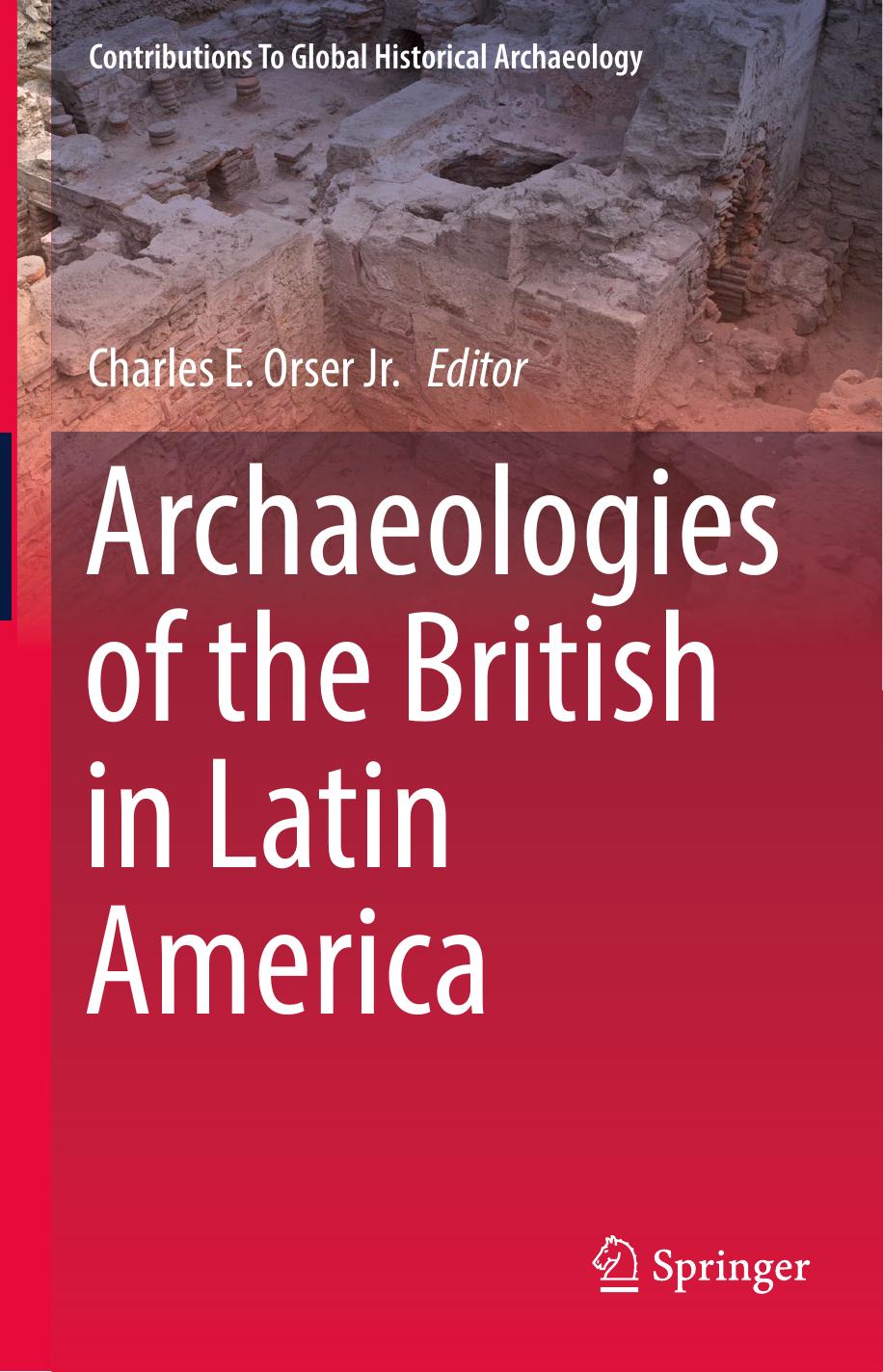Archaeologies of the British in Latin America by Charles E. Orser Jr

Author:Charles E. Orser Jr.
Language: eng
Format: epub, pdf
ISBN: 9783319954264
Publisher: Springer International Publishing
The assemblage contained 22 (NISP) burned or calcined elements [1.1% of the combined assemblage NISP]. Burns may also occur if specimens are burned intentionally or unintentionally after discard. Burning at extreme temperatures can cause calcification and is usually indicated by blue-gray discoloration. The small percentage of burned or calcined specimens suggests that meat foods were frequently prepared via boiling (e.g., soups and stews), instead of roasting, which would result in a higher percentage of burned or calcined remains.
Sixty-three (NISP) specimens have evidence of butchery, processing, and preparation (e.g., cut and hack marks; local impact/crushing; abrading/grinding/polishing; and twisting), which represents 1.1% of the total assemblage. Modifications can indicate butchering methods as well as site formation processes. Cuts are small incisions across the surface of specimens. These marks were probably made by knives or cleavers as meat was removed before or after cooking. Cuts may also be left on specimens if attempts are made to disarticulate the carcass at joints. Some marks that appear to be made by human tools may actually be abrasions inflicted after the specimens were discarded but distinguishing this source of small cuts requires access to higher-powered magnification (Shipman and Rose 1983). Cut marks on deer elements, particularly on astragali and proximal phalanges, may also originate from skinning activities (Pavao-Zuckerman 2007). Hack marks are evidence that some larger instrument was used. Presumably, a cleaver, hatchet, or axe would have been employed as the carcass was being dismembered rather than after the meat was cooked. Similarly, percussion marks or evidence of local impact/crushing or twisting would suggest that the bone was cracked open to expose the marrow cavity, either for the extraction of the marrow itself or for grease rendering (Outram 2001). Worked specimens show evidence of human modification for reasons likely unrelated to butchery (e.g., carved, drilled, or polished specimens). Gnawing by rodents and carnivores indicate that specimens were not immediately buried after disposal. While burial would not guarantee an absence of gnawing, exposure of specimens for any length of time might result in gnawing. Rodents include such animals as squirrels, mice, and rats. Much like the small number of burned or calcined specimens, the low percentage of processing marks suggests the preparation methods that utilized whole animals, rendering butchery unnecessary, at least for the most part. Of the San Pedro modified bone assemblage, most were twisted (NISP = 24), hacked (NISP = 15), or chopped (NISP = 10). Twisting mainly occurs during eating when bones are twisted and broken to get at the marrow (e.g., small mammals and birds). The complete absence of rodent gnawing points to systematic food disposal that included quick burial of meat food remains.
The final attribute category applied in this analysis is domestic versus wild fauna. Wild specimens make up 67.4% of the total identified faunal assemblage and domestic specimens account for 16.5%. A large wild fauna percentage is expected from an island or coastal site, due to much of the meat food being harvested from abundant marine environments, a trend that continues to this day.
Download
Archaeologies of the British in Latin America by Charles E. Orser Jr.pdf
This site does not store any files on its server. We only index and link to content provided by other sites. Please contact the content providers to delete copyright contents if any and email us, we'll remove relevant links or contents immediately.
| Africa | Americas |
| Arctic & Antarctica | Asia |
| Australia & Oceania | Europe |
| Middle East | Russia |
| United States | World |
| Ancient Civilizations | Military |
| Historical Study & Educational Resources |
Underground: A Human History of the Worlds Beneath Our Feet by Will Hunt(12052)
Sapiens by Yuval Noah Harari(5322)
Navigation and Map Reading by K Andrew(5133)
The Sympathizer by Viet Thanh Nguyen(4338)
Barron's AP Biology by Goldberg M.S. Deborah T(4122)
5 Steps to a 5 AP U.S. History, 2010-2011 Edition (5 Steps to a 5 on the Advanced Placement Examinations Series) by Armstrong Stephen(3707)
Three Women by Lisa Taddeo(3391)
Water by Ian Miller(3155)
The Comedians: Drunks, Thieves, Scoundrels, and the History of American Comedy by Nesteroff Kliph(3056)
Drugs Unlimited by Mike Power(2564)
A Short History of Drunkenness by Forsyth Mark(2258)
DarkMarket by Misha Glenny(2194)
The House of Government by Slezkine Yuri(2178)
And the Band Played On by Randy Shilts(2165)
The Library Book by Susan Orlean(2051)
Revived (Cat Patrick) by Cat Patrick(1974)
The Woman Who Smashed Codes by Jason Fagone(1945)
Birth by Tina Cassidy(1884)
The Absolutely True Diary of a Part-Time Indian by Sherman Alexie(1881)
